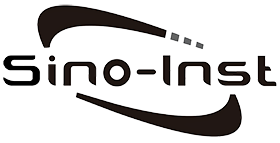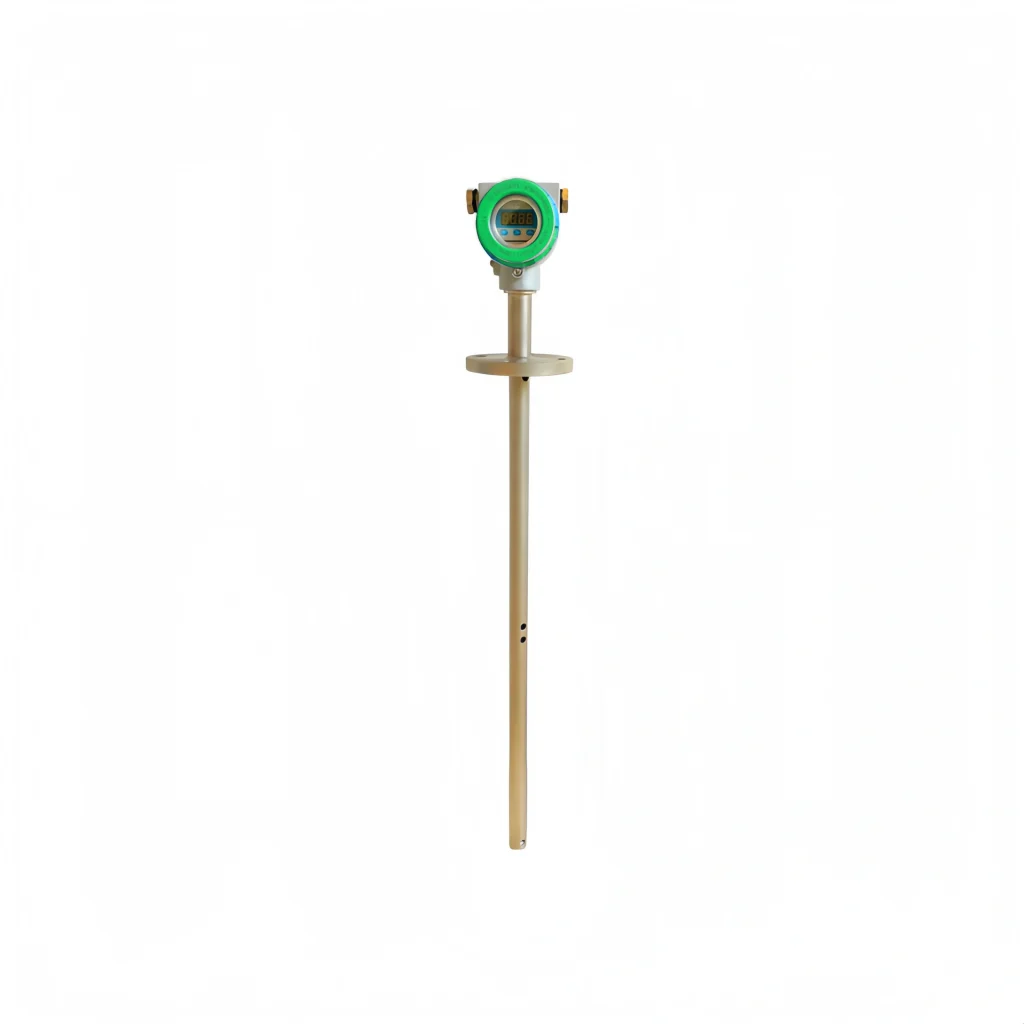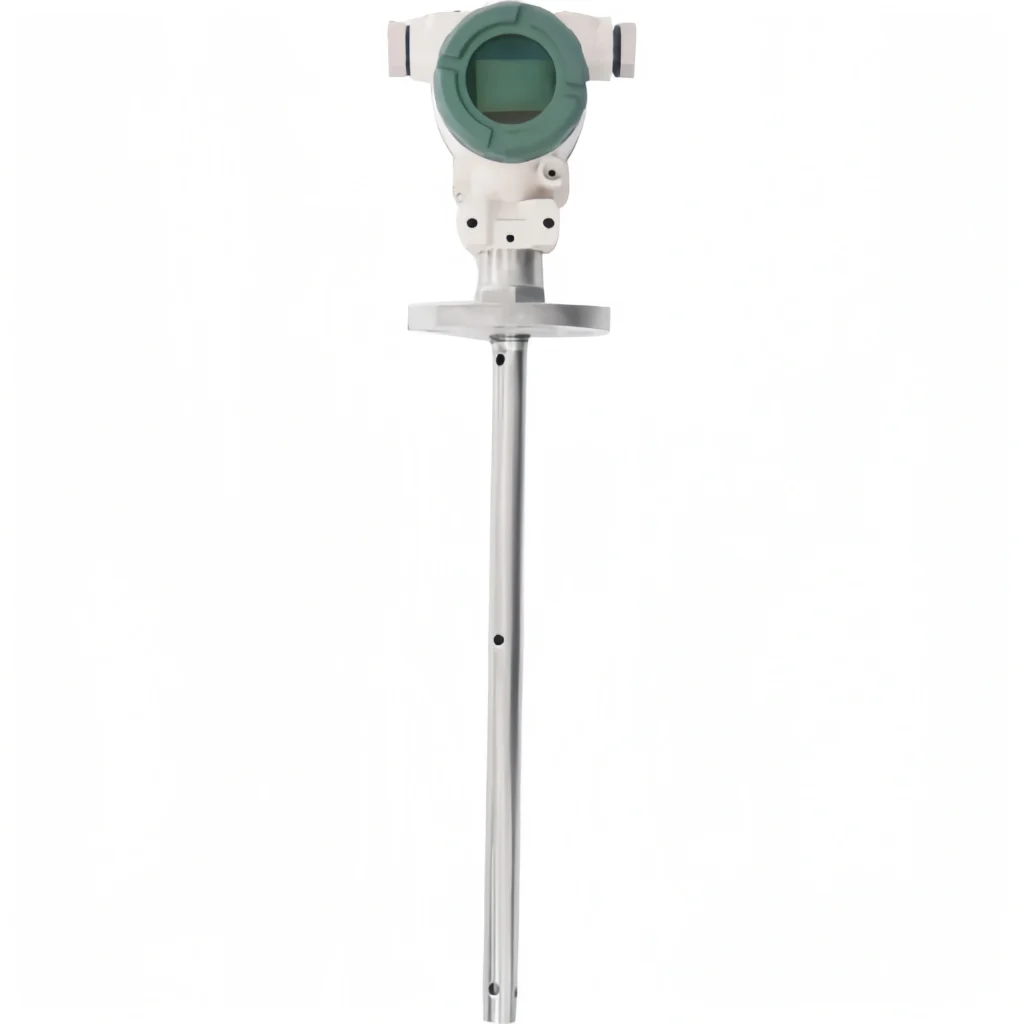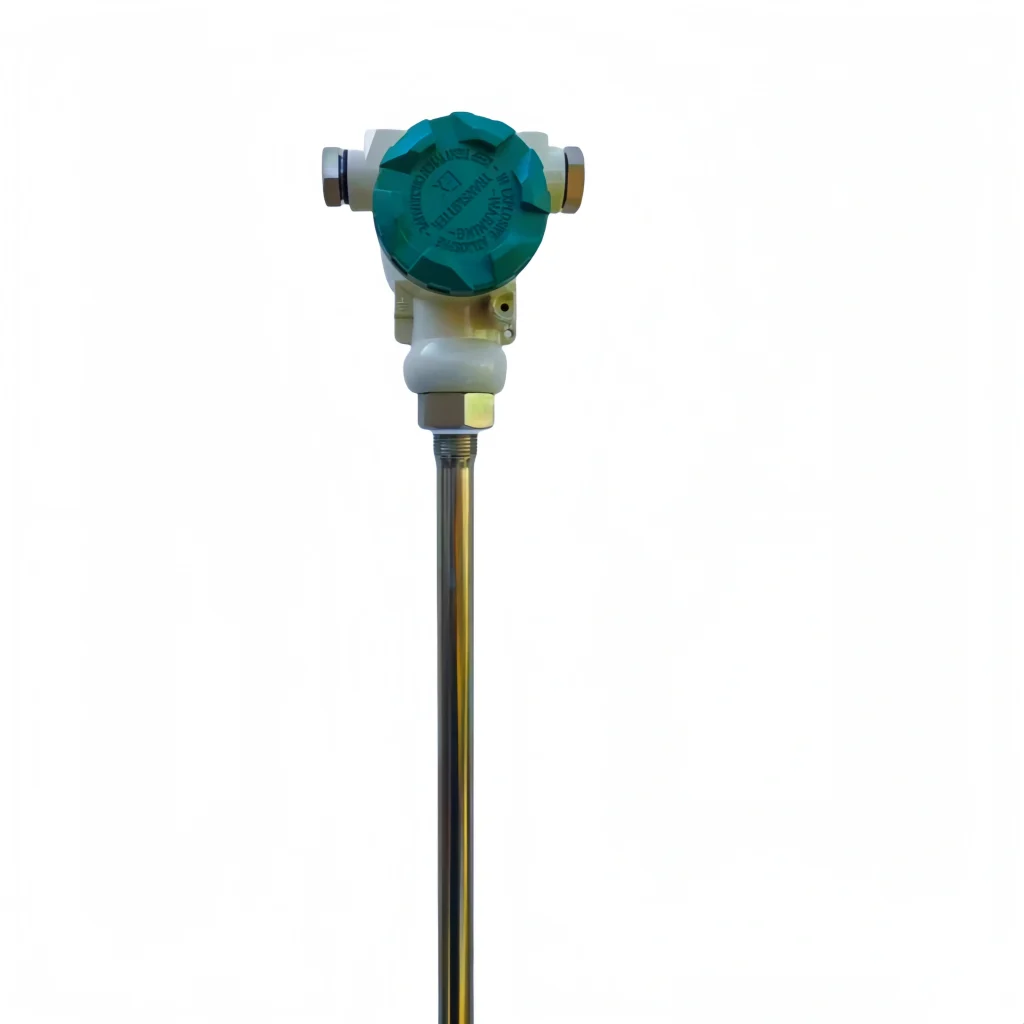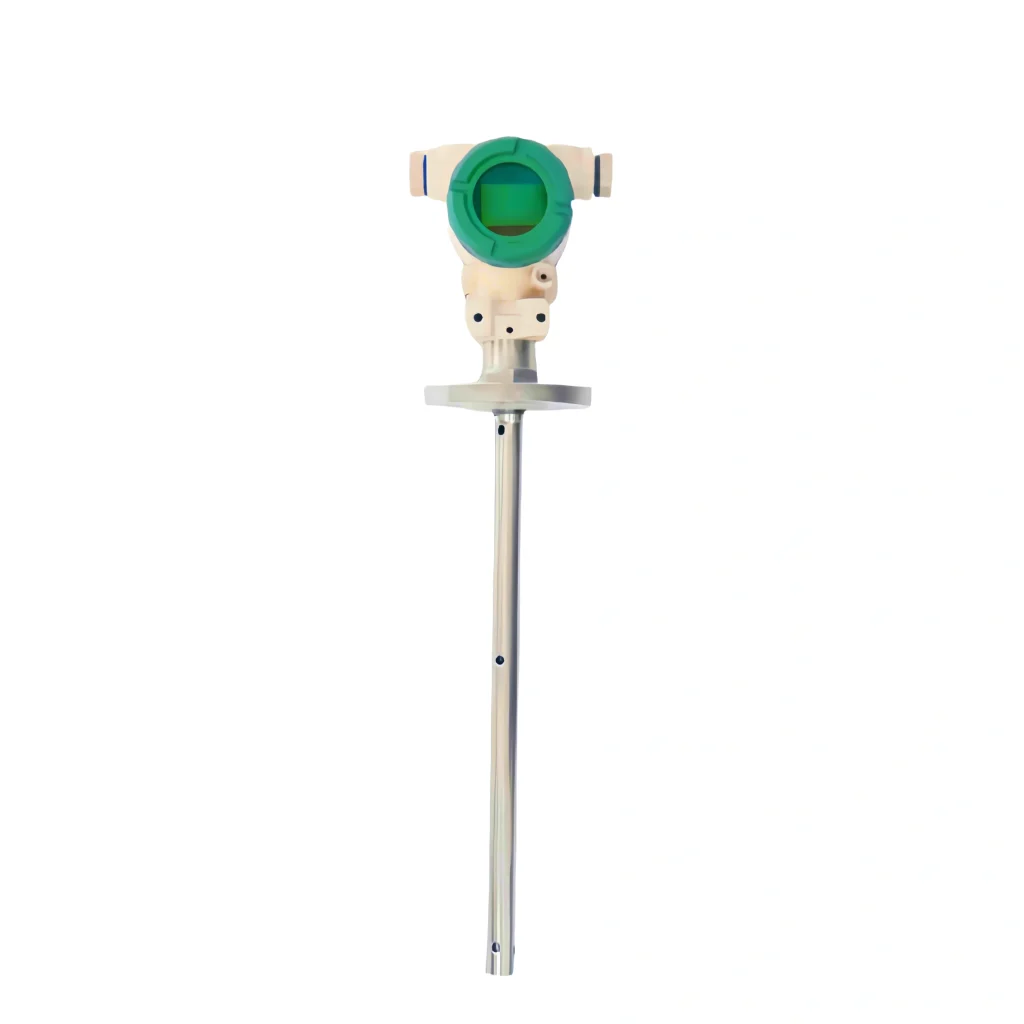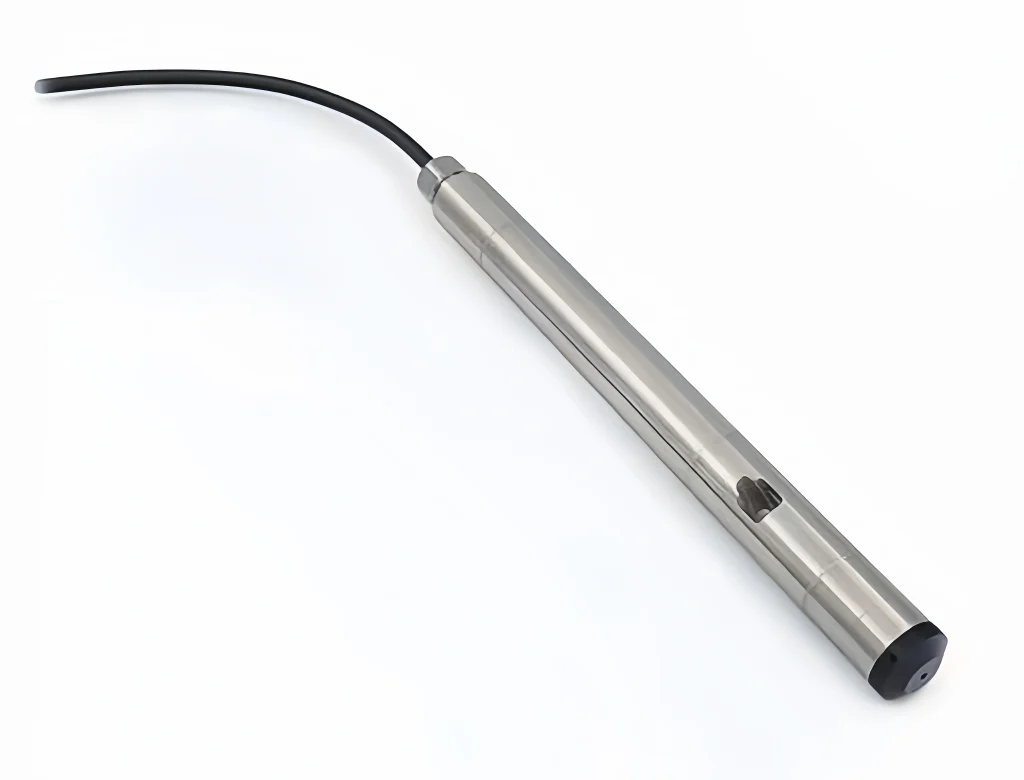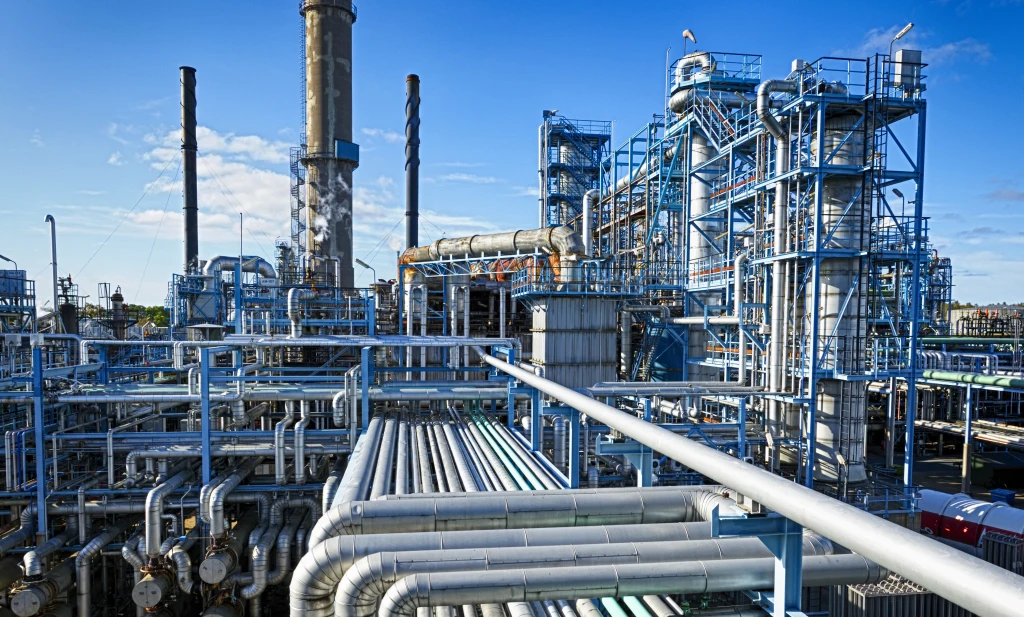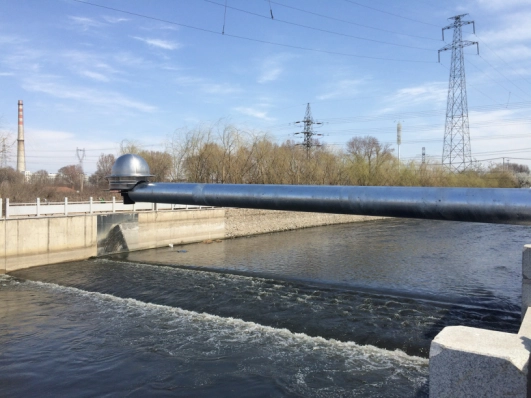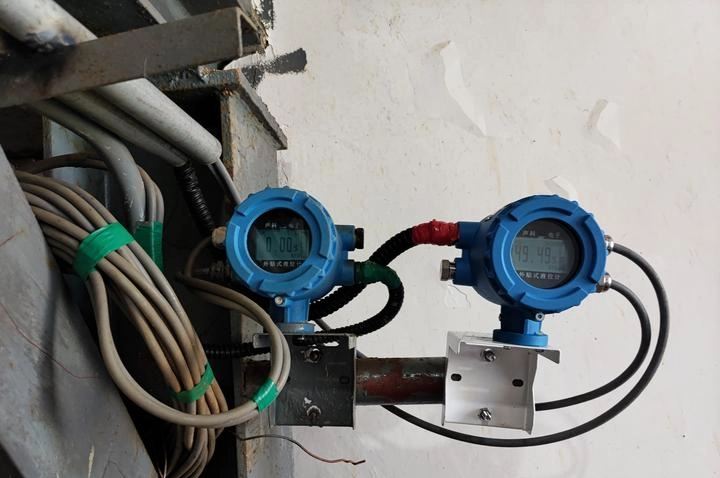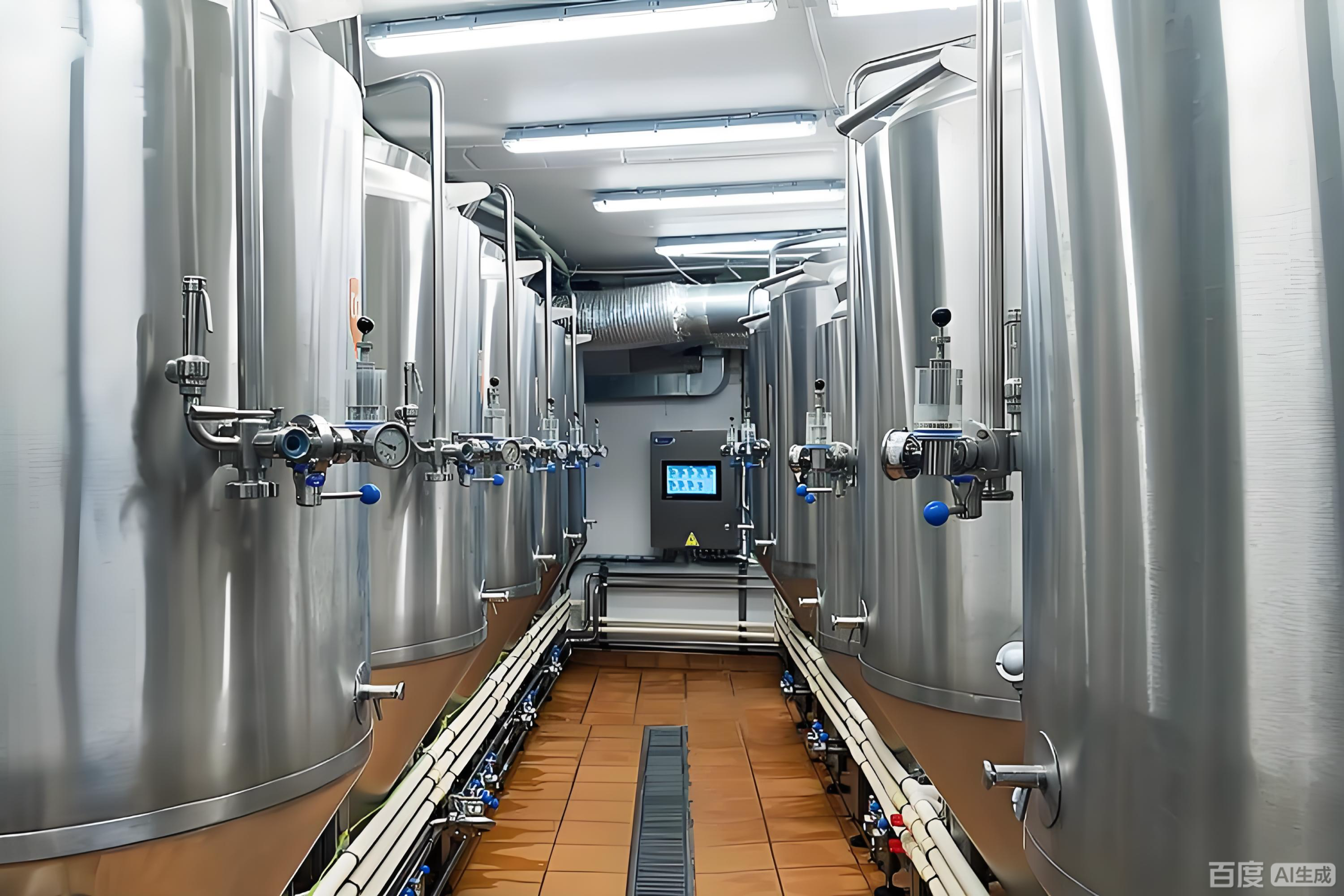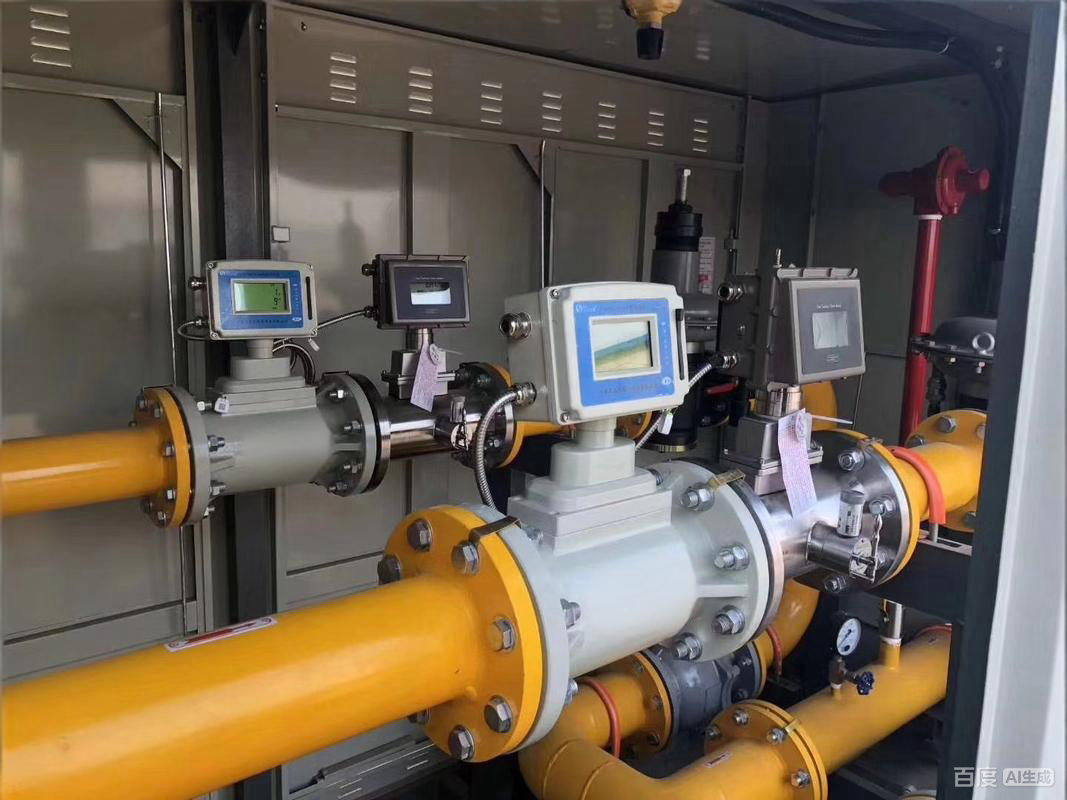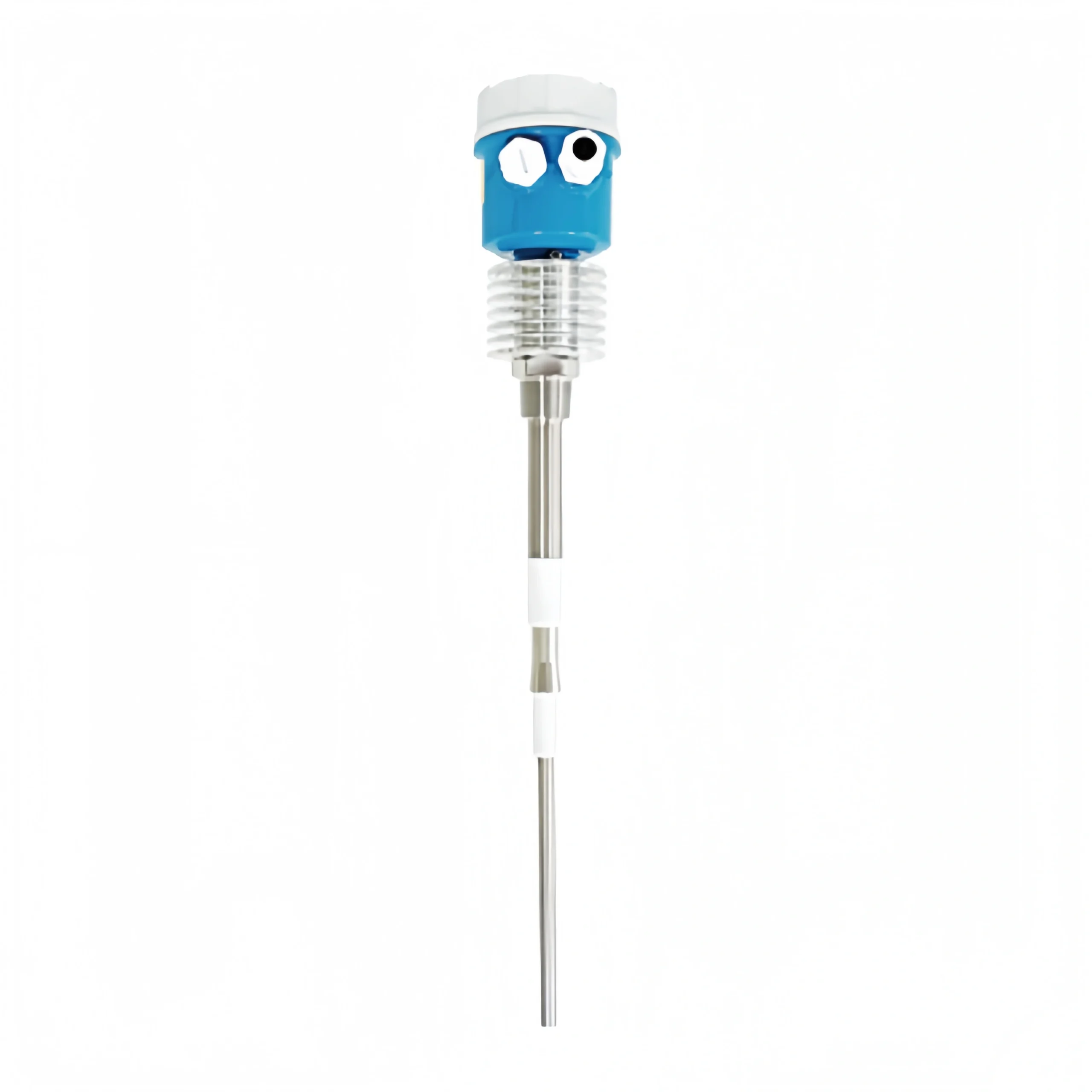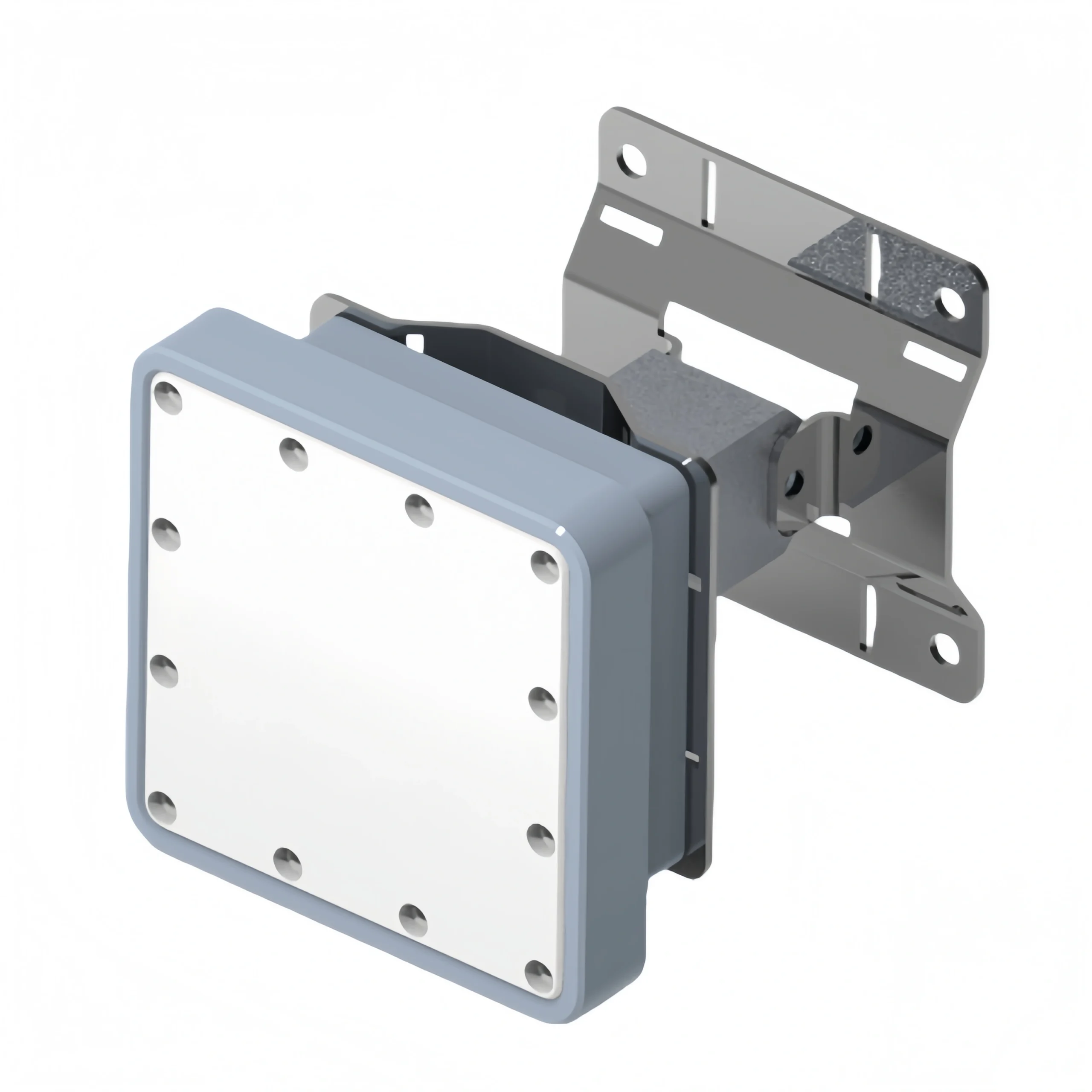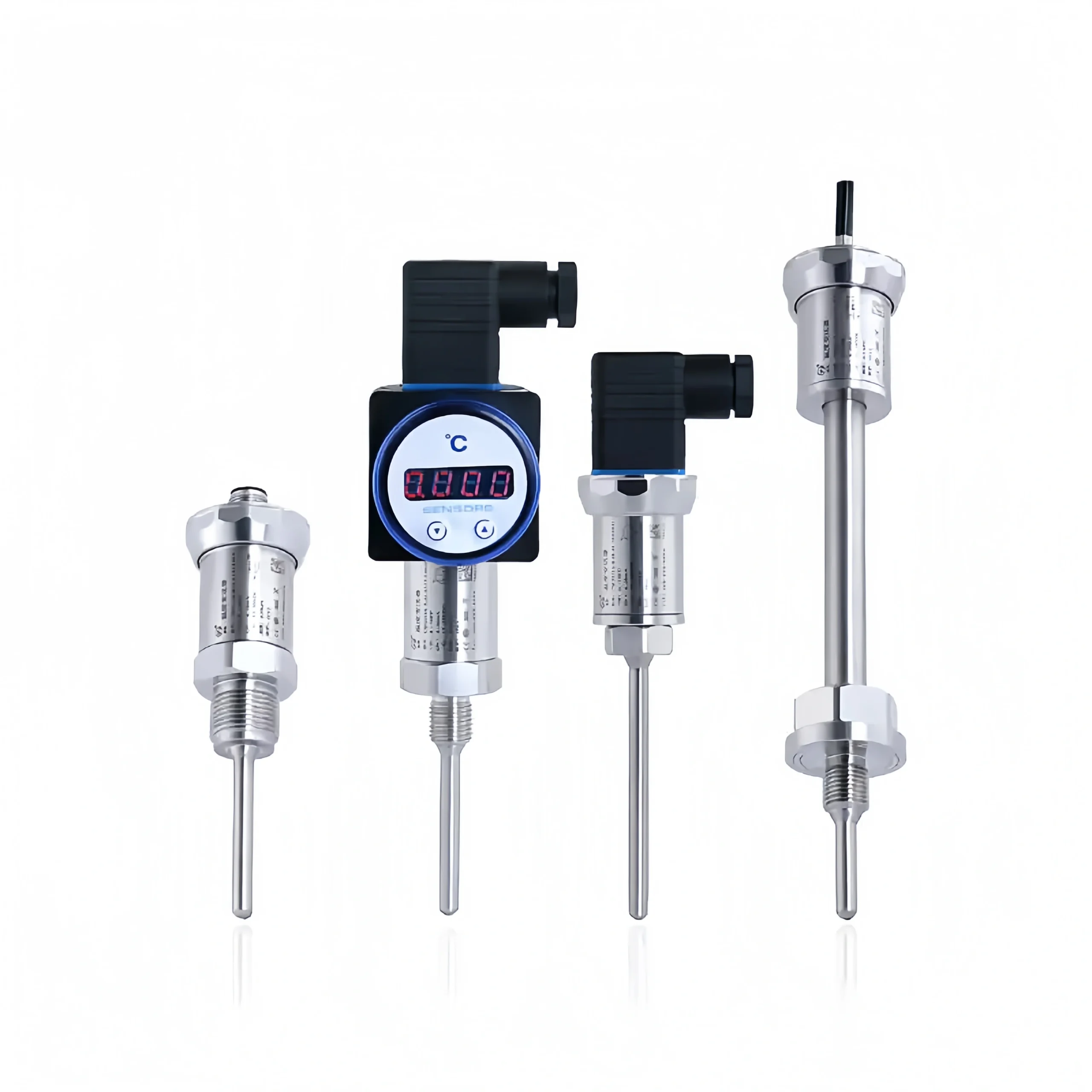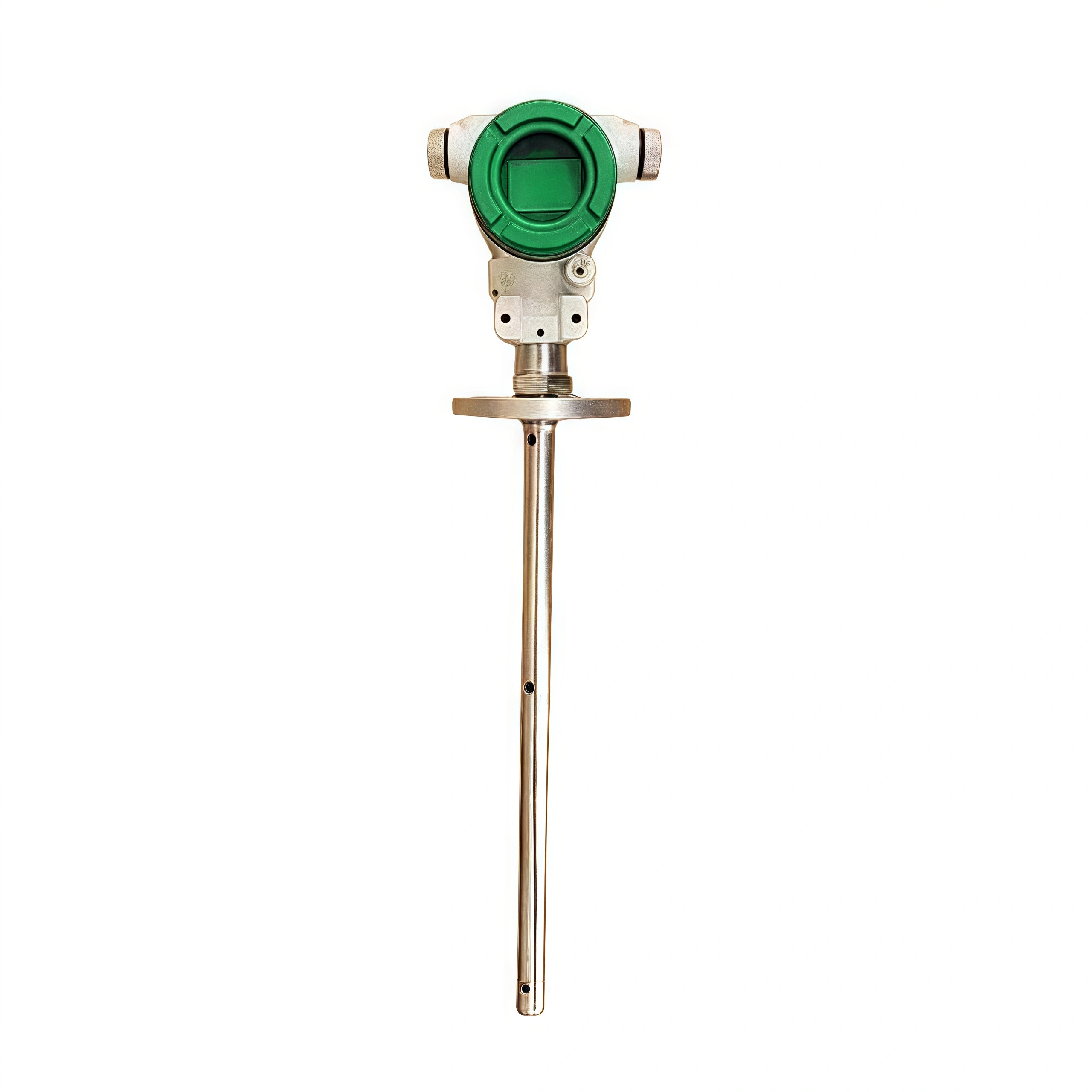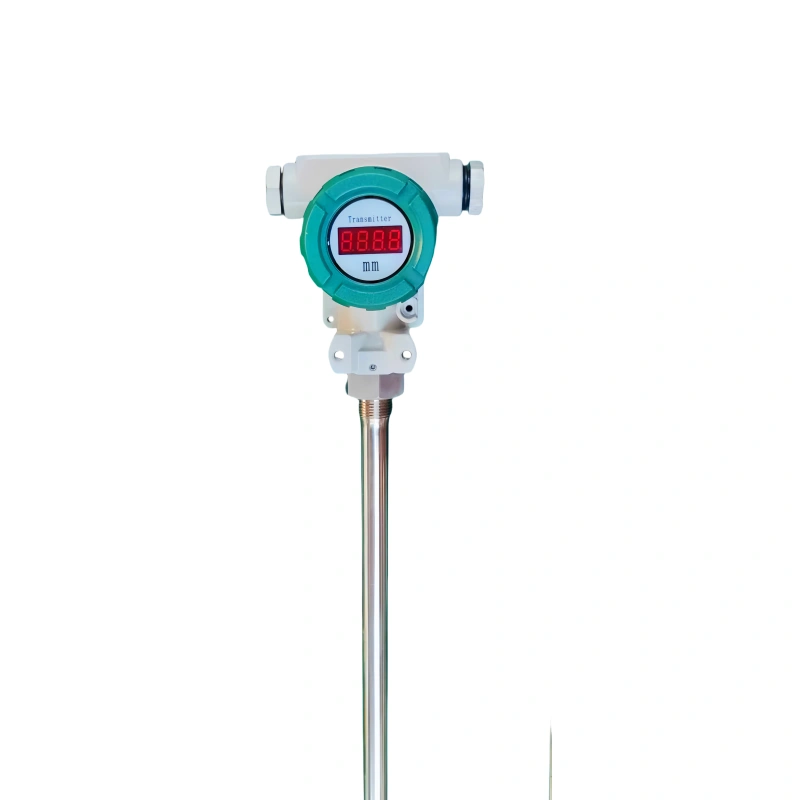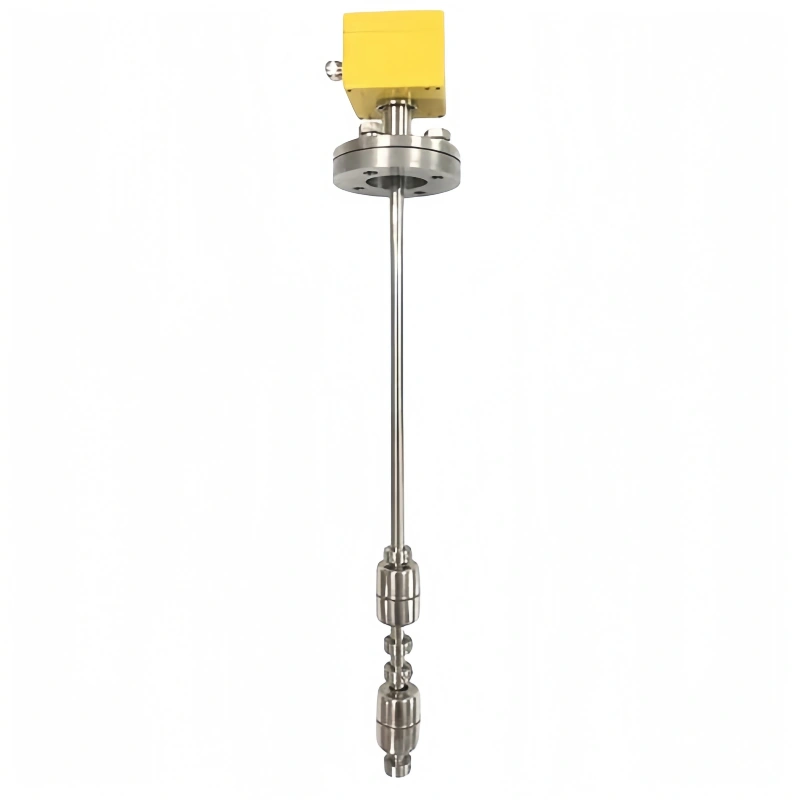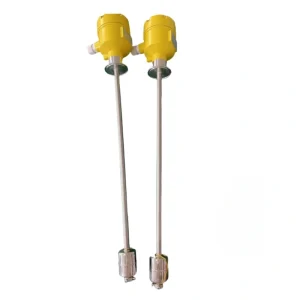A capacitive level sensor, also known as a capacitive level meter. It measures liquid level by converting changes in the position of the measured object into changes in capacitance.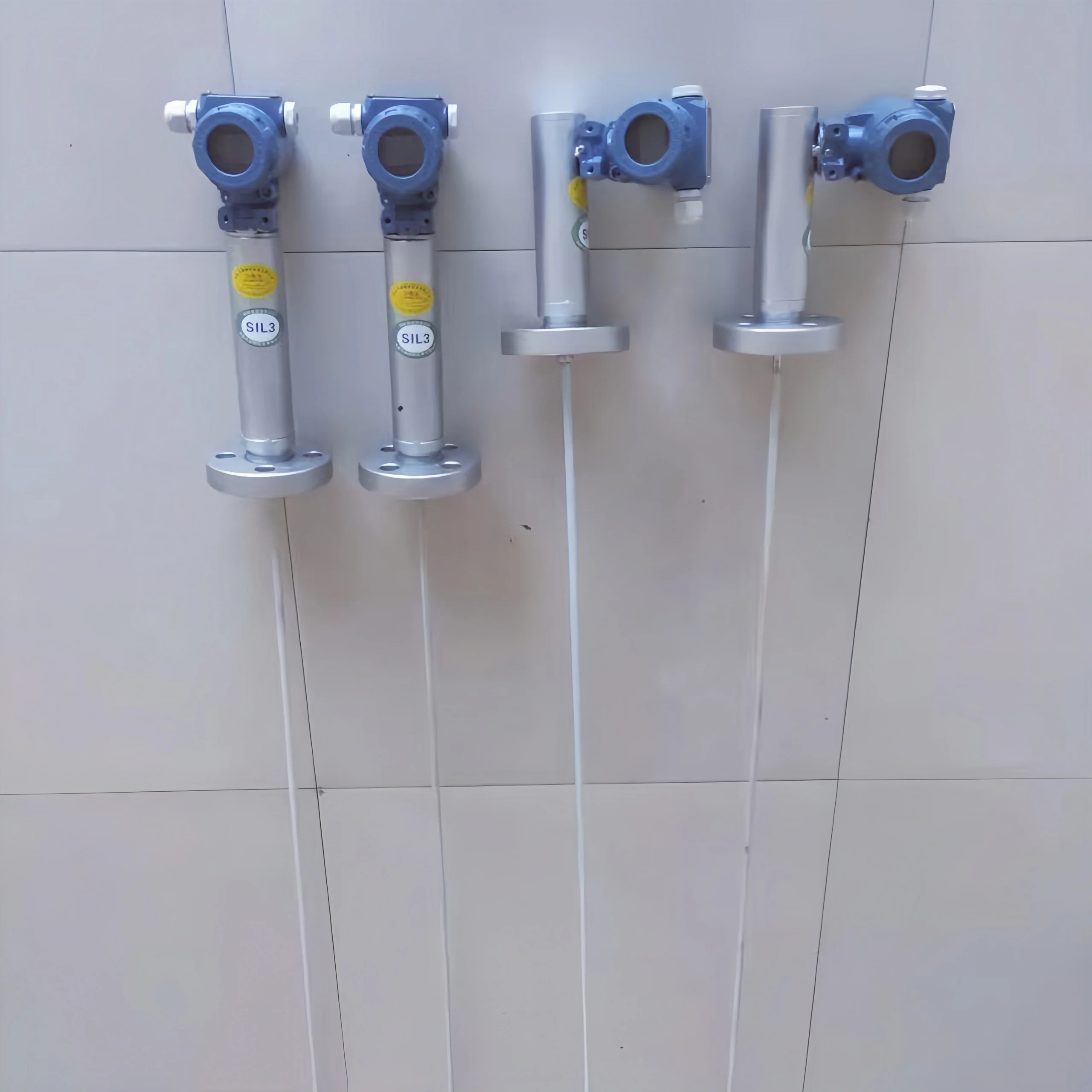
This article will provide a detailed introduction to capacitive level sensors.
What Is a Capacitive Level Sensor?
There are many types of level sensors, and capacitive level sensors are one of them. Capacitive level sensors measure liquid level by converting changes in capacitance.
Capacitive level sensors are widely used in industrial and agricultural production. Capacitive level sensors can measure the level of highly corrosive and high-temperature media. They can also measure the level of sealed containers. Their measurement results are unaffected by the viscosity, density, and operating pressure of the media.
Capacitive level sensors can provide continuous level measurement, limit switch detection, and interface detection.
Advantages:
- Rugged and durable. Easy to install. Low maintenance. Suitable for measuring slurries, powders, granular materials, and corrosive media.
- Fast response and small blind spot.
- No calibration is required for media conductivity of 100 μS/cm or higher. The sensor is factory calibrated according to the ordered length.
- It can be used in safety systems. Functional safety reaches SIL2. Compliant with IEC 61508.
- No recalibration is required after replacing the electronics.
- Interface measurement is possible.
Disadvantages:
- If the measured medium is a conductive, viscous medium, a layer of measured medium may remain on the electrode sleeve as the liquid level drops. Causes false level indications. In this case, the probe should be cleaned regularly.
- Use with viscous media that are prone to build-up should be avoided.
- Because the level sensor is mounted directly on the equipment and lacks a root valve, it cannot be removed online.
- For non-conductive media, recalibration is required when the dielectric constant changes. Compared to other level sensors, capacitive level sensors have lower accuracy.
Capacitive Level Sensor Working Principle:
Capacitive level sensors use the principle that changes in liquid level affect the capacitance of a container. They can be used to measure the level of high-temperature, high-pressure, and highly corrosive media. They are unaffected by the viscosity, density, and operating pressure of the medium. They offer high interference immunity and reliability.
Because the dielectric constant of the measured liquid differs from that above the liquid surface. The capacitance value (C = εS/4πkd) is proportional to the dielectric constant ε and the area S facing the electrodes. And it is inversely proportional to the distance d between the electrodes.
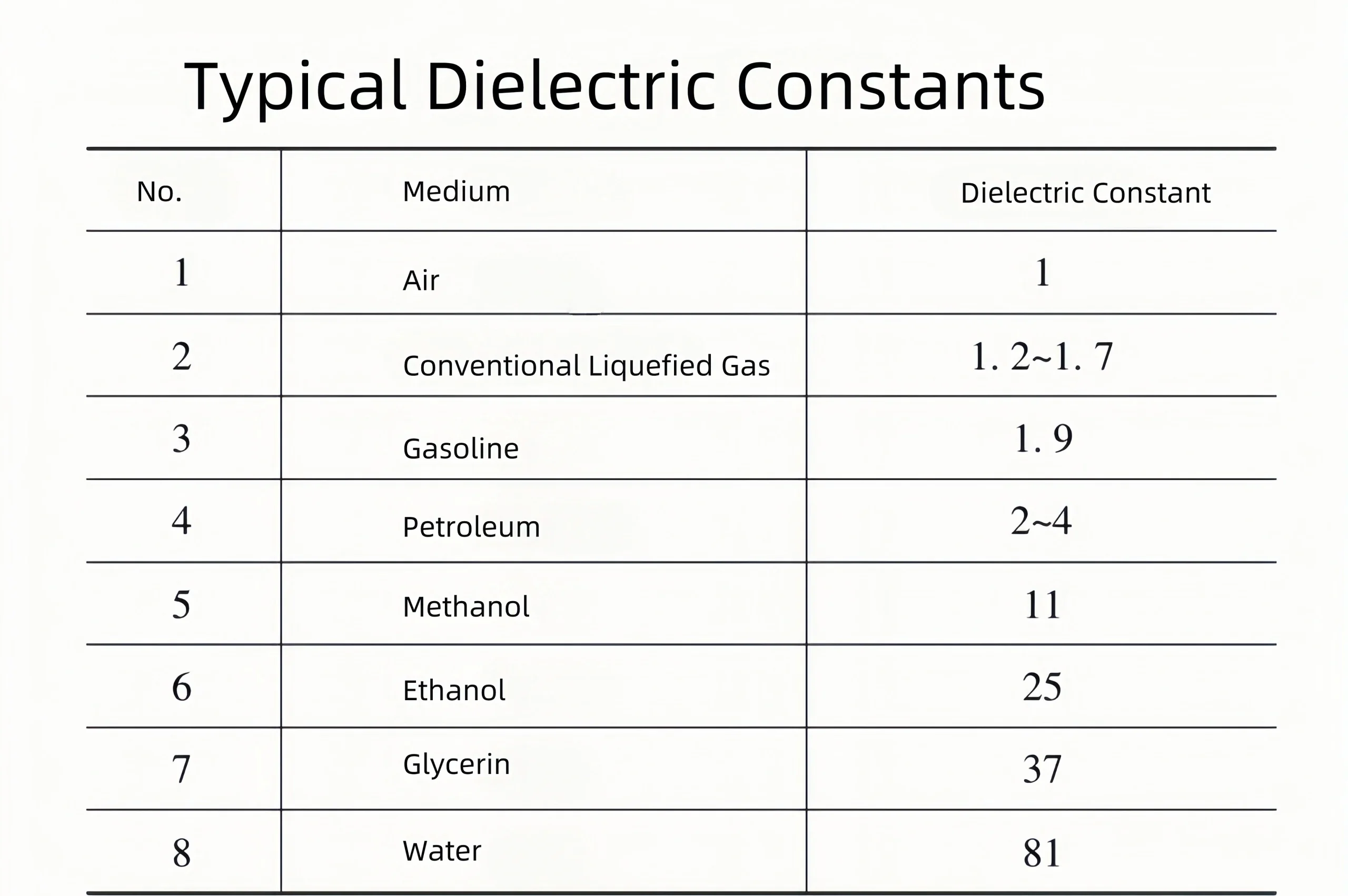
If the dielectric constant of the measured liquid is higher. The total dielectric constant between the two electrodes increases as the liquid level rises. Thereby increasing the capacitance. Conversely, as the liquid level falls, the capacitance decreases. Typical dielectric constants of common media are shown in Table 1 below.
The sensor and the container wall (made of conductive material) form a capacitor. When the sensor is in air, a small initial capacitance value, CA, is measured. As material is added to the container, the capacitance increases as the area of the sensor covered by the material increases. This capacitance value, CB, is measured. The change in capacitance, dC, equals CB – CA. The transmitter module converts this capacitance change into a signal. The signal is proportional to the liquid level.
The electronic calculation of the container capacitance value is based on the phase-selective measurement principle. During this process, the magnitude of the alternating current and the phase difference between the voltage and current are measured. Based on these two characteristic parameters, the reactive current is calculated. It is based on the dielectric capacitance. And the actual current is calculated based on the dielectric impedance.
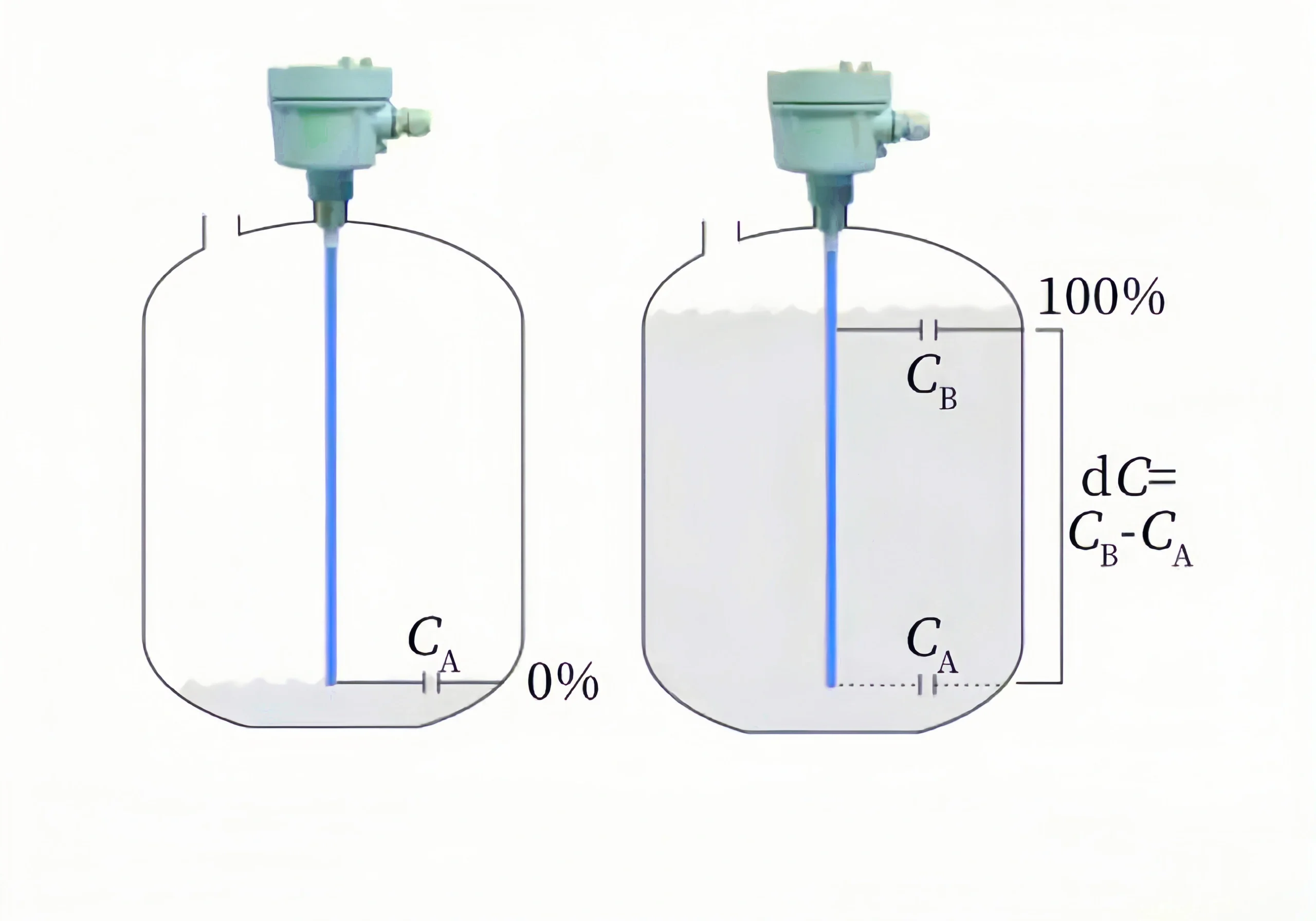
Conductive deposits and condensation on the sensor act as additional dielectric impedance. Causes measurement errors and requires sensor adhesion compensation.
Capacitive Level Sensor Types:
Sino-Inst classifies capacitive level sensors into four categories.
General-purpose Capacitive Level Sensor
It can operate at pressures below 0.6 MPa and 100°C. It is suitable for measuring the liquid level of conductive media. Such as reservoirs, sewage, baths, acid and alkali solutions, and low-pressure boilers.
High-Pressure Capacitive Liquid Level Sensor
Its probe is made of PTFE and its connectors are made of stainless steel. It can operate for long periods at 32 MPa and 100°C and exhibits strong corrosion resistance. It can measure conductive media at relatively low temperatures and high-pressure vessels.
Sanitary Capacitive Liquid Level Sensor
This product has a long-term operating pressure of up to 5 MPa. It is a specialized instrument customized for the food, pharmaceutical, beverage, brewing, and biological products industries. It utilizes standard sanitary stainless steel quick connectors and an integrated PTFE probe structure. Ensure a clean, seamless interface between the sensor and the media.
Coaxial Sheathed Capacitive Liquid Level Sensor
The sensor consists of a coaxial container. When liquid enters the container. The capacitance between the sensor housing and the sensing electrode changes. This capacitance change is converted by the circuit, precisely linearized, and temperature-compensated. And then outputs a 4-20 mA standard signal to the display instrument.
It is suitable for measuring various non-conductive liquids and has strong anti-interference capabilities. They are ideal for applications with large level fluctuations.
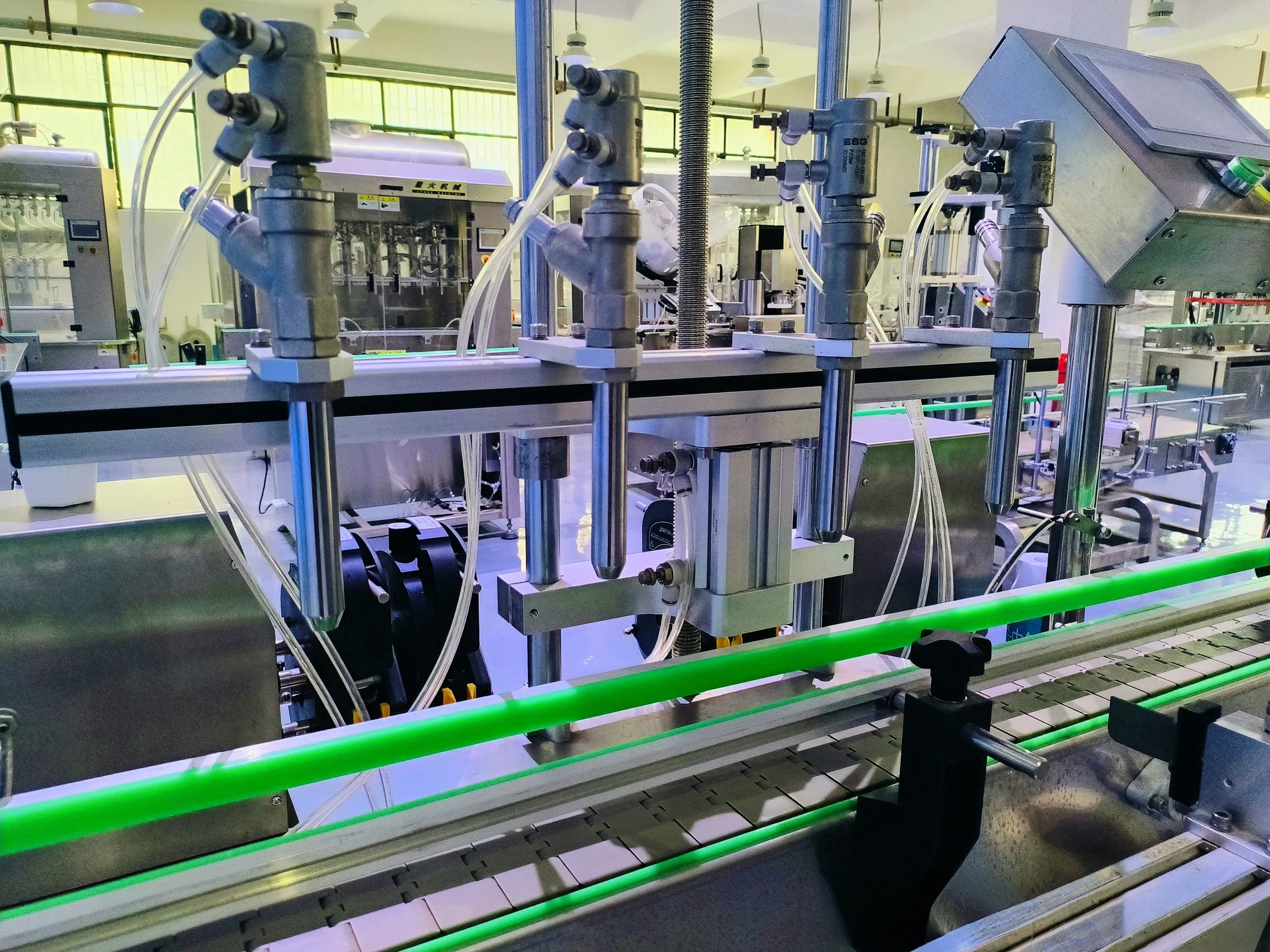
Capacitive Level Sensor Signal Output
Sino-Inst’s level sensors offer customizable output signals. Based on the nature and form of the output signal, they can be categorized into several common types:
Analog Signal: An analog signal is a continuously varying signal whose value can take on any value within a certain range. For example, the audio signal in an audio system is analog.
Digital Signal: A digital signal is a discrete signal whose value can take on a finite number of values. Digital signals are commonly used in computer systems and digital communication systems.
Pulse Signal: A pulse signal is a short, bursty signal, typically consisting of a specific pulse shape. It is commonly used in applications such as control systems, sensors, and timers.
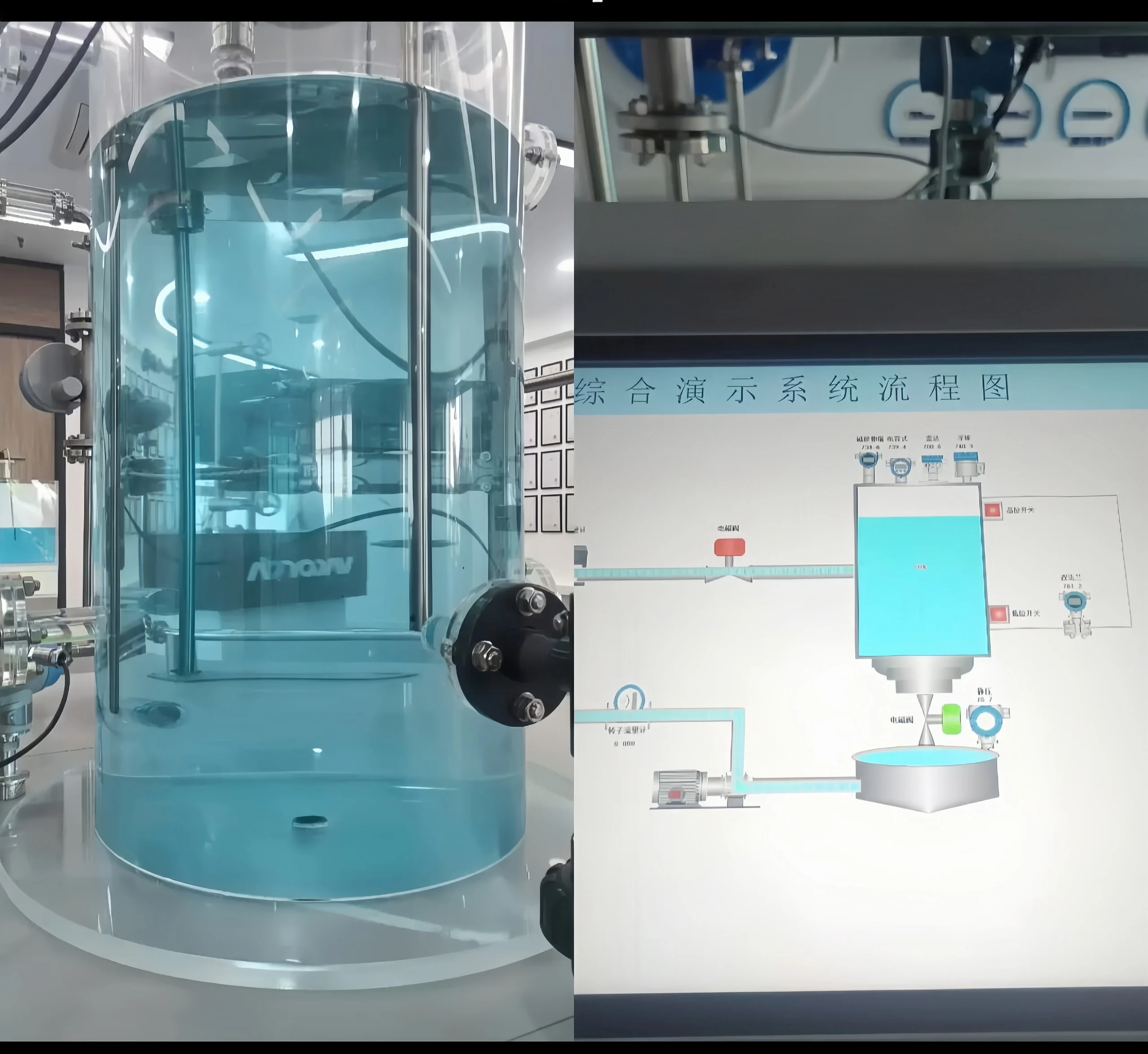
Capacitive Level Sensor Application
Capacitive Level Sensor Applications:
1. Continuous Level Detection
Level detection of viscous liquids or slurries. Conventional liquid level detection (water/water-based media/oil, etc.)
2. Interface detection (continuous/switchable) Oil-water interface detection.
3. Limit switch detection
- Limit level detection for adhesive liquids or slurries.
- Foam detection for conductive liquids.
- Conventional limit level detection (various solids/liquids).
Two-point pump control.
Capacitive level sensor application industries
- Chemical plants: Detect the liquid level of chemical raw materials. Such as polyester, spandex, acids, and alkalis;
- Environmental protection: Detecting wastewater level;
- Boiler rooms: Detecting the liquid level of media in pressure vessels;
- Hydraulic machinery: Detecting lubricating oil level;
- Grain departments: Detecting edible oil level;
- Oil fields: Detecting finished oil level;
- Paint factories: Detecting paint level;
- Powder silos: Detecting materials in silos such as coal powder, cement, plastic pellets, grain, feed, and flour;
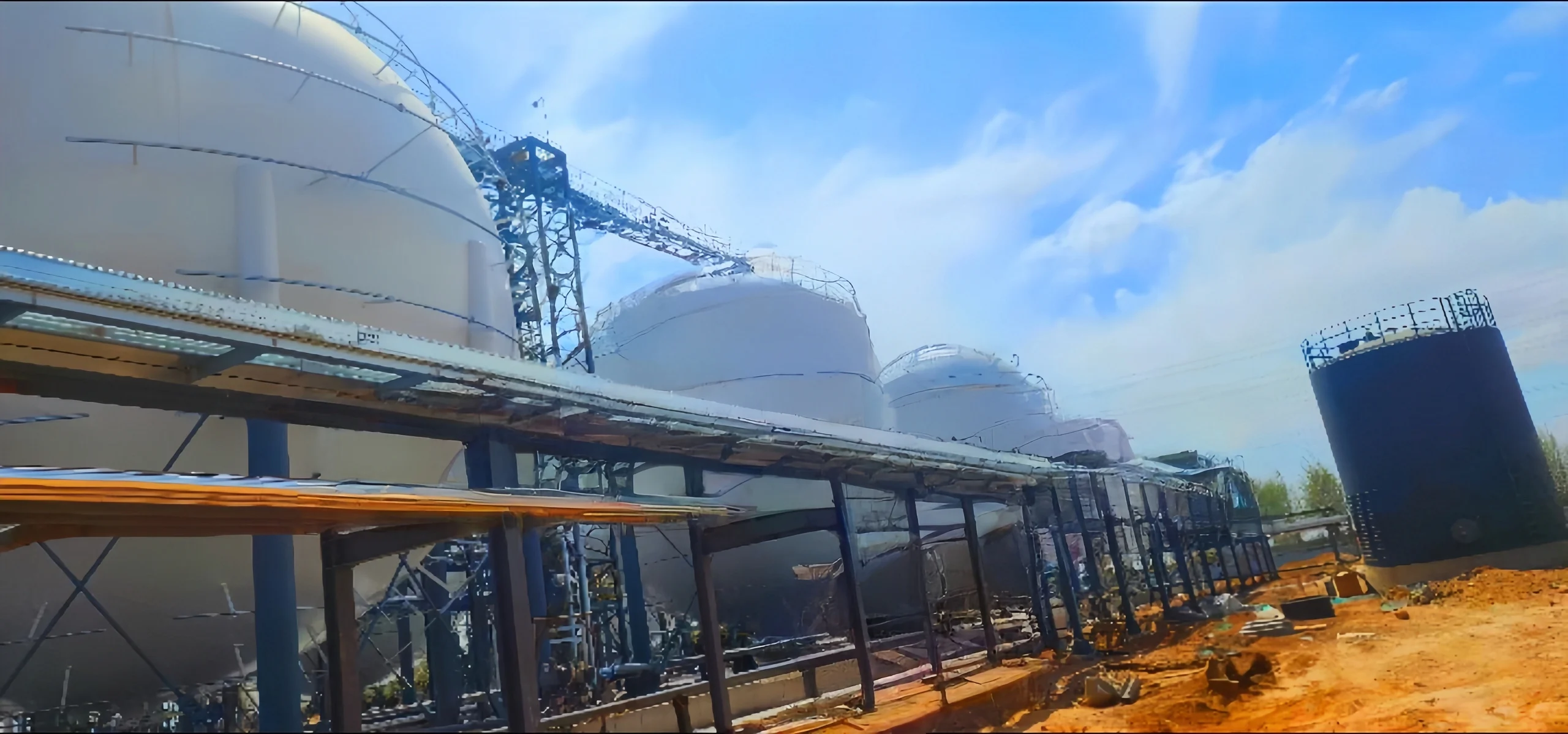
How Far can a Capacitive Sensor Detect?
A capacitive sensor is a non-contact sensor. It uses changes in capacitance to detect the proximity or presence of an object.
Sino-Inst’s capacitive sensors are customizable. Their measurement distances can range from a few millimeters to several hundred meters.
Influencing Distance Factors
1. Operating Frequency
2. Electrode Size and Shape
3. Dielectric Properties
4. Environmental Factors
5. Power Supply Voltage
What are Capacitive Sensors Commonly Used For?
Capacitive sensors are widely used in numerous fields:
Displacement/Position Detection:
- Micro-displacement (nanoscale) measurement in precision machinery (e.g., machine tools, optical tables).
- Vibration Analysis.
- Online Component Thickness, Concentricity, and Roundness Measurement.
- Proximity Switches (sensing the presence of metal or non-metallic objects).
- Keys (e.g., elevator buttons, keyboards).
Pressure Measurement:
- Differential, absolute, and gauge pressure.
- Blood Pressure Monitoring in Medical Equipment.
- Pressure Monitoring in Industrial Process Control.
Liquid Level Measurement:
- Measures the liquid level (including insulating liquids) in various storage tanks. It is used in the chemical, food, and pharmaceutical industries.
- Interface measurement (between two immiscible liquids, such as oil and water).
Humidity Measurement:
- Measures the relative humidity of air, soil, and other materials. The sensor utilizes the change in the dielectric constant of polymers or ceramics after absorbing moisture.
Consumer Electronics and Touch Interaction:
- Touchscreens: Projected capacitive touchscreens are widely used in smartphones and tablets.
- Touchpads: Laptop touchpads.
- Fingerprint Recognition: Many mobile phones use capacitive fingerprint sensors. Read the capacitance differences formed by the valleys and ridges of a fingerprint.
- Gesture Recognition (Proximity Sensing).
Flow Measurement:
- Measures changes in material concentration in two-phase flows (such as gas/solid mixed flows).
- Measures flow velocity or flow rate in conjunction with structures such as Venturi tubes.
Composition Analysis and Material Property Testing:
Measures the dielectric constant of a material to indirectly analyze its composition, density, moisture content, thickness, and other information. Such as online thickness/humidity testing of paper, plastic film, and grain. Oil quality testing (e.g., increased water content causes a change in dielectric constant).
Medical equipment:
- Respiratory flow monitoring (e.g., spirometer).
- Heart sound monitoring.
- Body surface displacement detection.
What is the difference between capacitive and resistive level sensors?
Resistive level sensors
They operate by changing the resistance of electrodes as the level changes. Sensors that cause a gradual change in resistance with level changes can be used for continuous level measurement. Sensors that cause a sudden change in resistance only when the level reaches the electrode contact point. It can be used for fixed-point alarm and level control.
In resistive level sensors, the electrodes come into contact with the measured medium. The medium is typically a conductive liquid. Changes in the contact condition of the electrode surface (e.g., dirt, rust, corrosion, etc.). It causes changes in surface contact resistance, resulting in measurement error. This error increases with age.
Thus, despite their simple structure, these sensors are not widely used. They are primarily used for fixed-point level alarms and control, and are rarely used for continuous measurement.
Capacitive Liquid Level Sensors
Level changes cause changes in the capacitance of electrodes. Capacitive level sensors utilize this principle. It can measure the levels of conductive and non-conductive liquids, as well as non-conductive granular solids. Two coaxial, insulated, conductive metal cylinders separated by a non-conductive dielectric form a capacitor.
Modern capacitive level instruments utilize safety, explosion-proof, and flameproof features. And their application has expanded to include chemical, petroleum, and light industrial sectors. Capacitive level instruments are the most widely used type of electrical level instrument.
We offer a wide variety of liquid level sensors. Regardless of the material you need to measure, we have a product to meet your needs.
In short, capacitive sensors can be used to measure materials with unique properties. If you encounter challenges with liquid level measurement. Please feel free to contact us. We will leverage over 20 years of measurement experience to provide you with cost-effective solutions.
